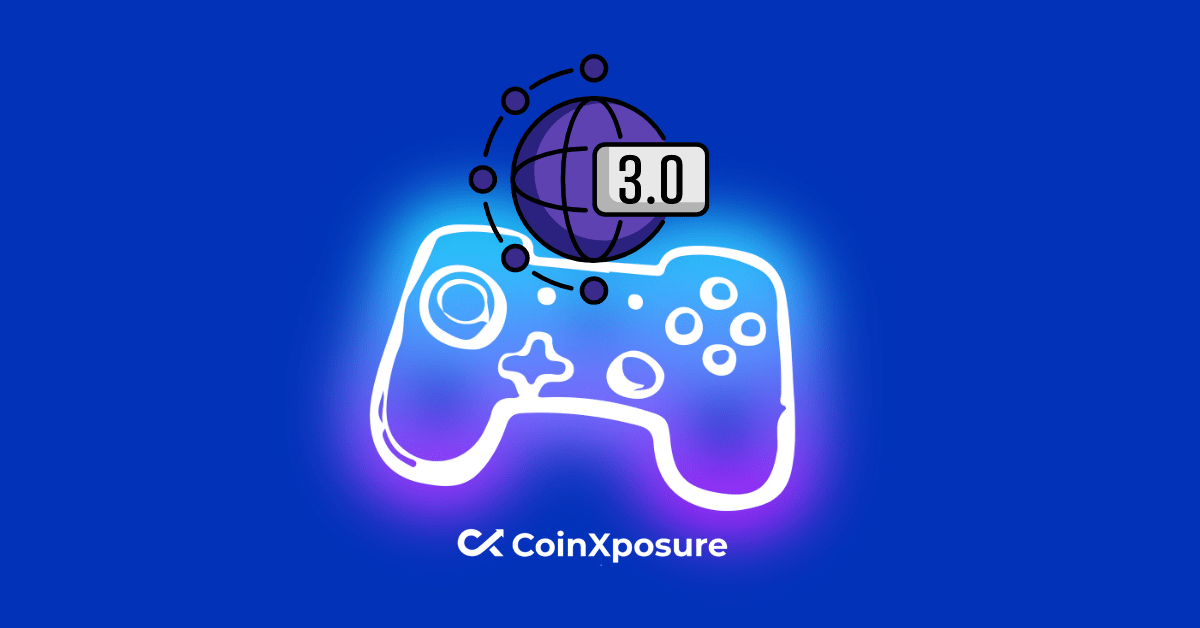The gaming industry is experiencing unprecedented growth, propelled by technological advancements, evolving consumer preferences, and the surge of online gaming communities.
Web3 has emerged as a game-changer for the industry, and it promises to revolutionize gaming and offers developers, players, and investors new opportunities. However, the road to achieving its full potential is challenging. This article will explore the challenges and opportunities in Web3 Gaming.
What is Web3 Gaming?
The application of blockchain technology and cryptocurrency in gaming is known as Web3 gaming. With the help of this invention, gamers can now freely trade their in-game goods, own them, and profit financially from their gaming experiences.
Web3 gaming’s decentralized structure instills trust, security, and transparency in the player community. They do, however, face major obstacles, just like any other developing technology.
The Rise of Web3 Gaming
Web3 gaming is a revolutionary approach to game development, distribution, and monetization. This innovative technology is built on decentralized systems such as blockchain and peer-to-peer networks, prioritizing user ownership, interoperability, and secure interactions.
Web3 gaming platforms provide players with the ability to truly own their in-game assets, participate in player-driven economies, and engage in provably fair gameplay.
Challenges in Web3 Gaming
Although web3 gaming represents a paradigm shift in the gaming industry, it also poses quite a few challenges. Some of such challenges are:
- Usability
- Interoperability
- Security
- Scalability
- Regulatory uncertainty
Usability
For mainstream players, it can be intimidating to deal with the complexity of blockchain technology, cryptographic key management, and decentralized governance mechanisms. Adoption can only be accelerated by improving the user experience with user-friendly interfaces, smooth onboarding procedures, and instructional materials.
Streamlining user experience and reducing friction will be essential in attracting casual gamers to web3 gaming. User-friendly interfaces, enhanced wallet functionalities, and cross-chain interoperability can help overcome these barriers.
Interoperability
In addition to enabling players to buy, sell, and trade digital goods outside of a particular game’s boundaries, web3 gaming promises true ownership of in-game assets. However, achieving interoperability between various gaming platforms continues to be a significant challenge.
At the moment, the majority of games are developed using proprietary standards or on distinct blockchain networks, which restricts the transfer of assets between gaming environments. The establishment of industry-wide protocols and standards is necessary to enable true interoperability.
Security
With cryptocurrencies at the heart of web3 gaming, players and developers are primarily concerned with security because hacking and fraud are serious risks. Blockchain has been plagued by smart contract vulnerabilities, wallet breaches, and phishing attacks.
Implementing strong security measures, audited smart contracts, and improved user authentication protocols is necessary to reduce these risks and promote trust in web3 gaming.
Scalability
Blockchain networks, such as Ethereum, currently have constraints in terms of transaction processing speed and capacity. These limitations present a challenge for games with large player bases and high volumes of transactions.
Scaling solutions like layer two protocols and sharding are being studied to tackle this issue. Solving scalability issues will be critical for web3 gaming to achieve widespread adoption.
Regulatory Uncertainty
The regulatory landscape surrounding Web3 gaming is still evolving and can vary significantly across jurisdictions. Platform operators and players are exposed to risks due to regulatory uncertainty surrounding cryptocurrencies, tokenization, and decentralized governance models.
Developing trust and confidence in Web3 gaming platforms requires well-defined and cohesive regulatory frameworks that balance consumer protection and innovation.
Opportunities in Web3 Gaming
Regardless of the challenges, Web3 gaming still provides players and developers with various opportunities. These opportunities are:
- Ownership and tradable assets
- Play-to-earn economy
- Provably fair gameplay
- Interoperability and metaverse
- Community engagement and governance
Ownership and Tradable assets
Web3 gaming allows genuine ownership of in-game assets by transferring and trading on blockchain networks. In contrast to traditional gaming, where players do not truly own virtual items, creating a strong in-game economy enables players to monetize their investments and abilities. Owning and trading valuable assets could revolutionize the gaming industry.
Play-to-Earn Economy
Web3 gaming allows players to earn real rewards for their time and effort by using blockchain and cryptocurrencies. Developers can reward players with tokens or other valuable assets for their achievements.
This model incentivizes players to engage with the game and its economy, creating a more inclusive ecosystem with new opportunities for players in developing nations.
Provably Fair Gameplay
In the traditional gaming industry, concerns about fairness and transparency have always loomed large. However, the emergence of Web3 gaming platforms powered by blockchain technology offers a promising solution: provably fair gameplay.
Blockchain technology enables transparent and verifiable gameplay, enhancing trust and fairness in online gaming and reducing the risk of cheating and manipulation.
Interoperability and Metaverse
Web3 gaming can establish interconnected virtual universes, known as the metaverse. By using blockchain technology, games can seamlessly interact with each other, allowing players to traverse different gaming universes with a single avatar and inventory.
This interoperability enables unique gameplay experiences, collaborative features, and a fully immersive metaverse environment, providing web3 gaming with an exciting opportunity to revolutionize how players engage with virtual worlds.
Community Engagement and Governance
Decentralized and transparent governance models can be facilitated by blockchain technology, which can be leveraged by Web3 gaming to create community-driven decision-making processes.
In addition to proposing new features and casting votes on crucial choices, players can influence how the game is developed. This degree of community engagement encourages player loyalty and ownership, which makes the gaming ecosystem more robust and successful.
Conclusion
The road ahead for Web3 gaming is filled with both challenges and opportunities. To fully realize Web3 gaming’s potential, many significant obstacles must be overcome, including scalability, usability, interoperability, and regulatory uncertainty.
Web3 gaming is an exciting new frontier for players, developers, and investors alike, though, because it promises true ownership, player-driven economies, provably fair gameplay, and community-driven development. Web3 gaming holds the potential to completely transform the gaming industry and alter the way we create, play, and interact in virtual worlds if these obstacles are overcome and these opportunities are seized.











